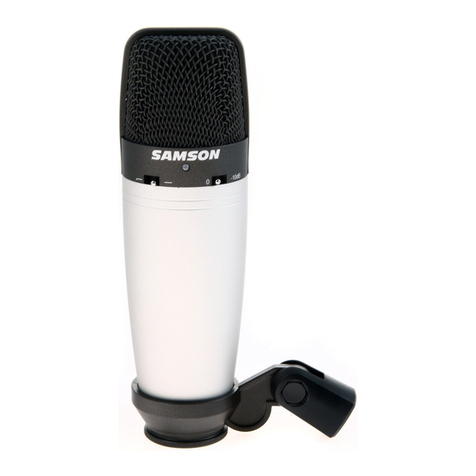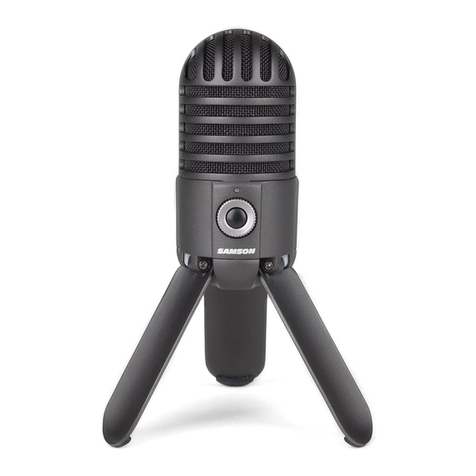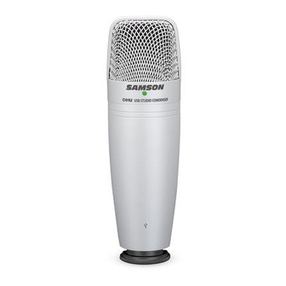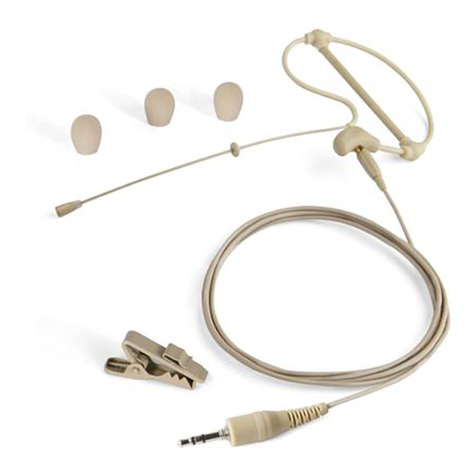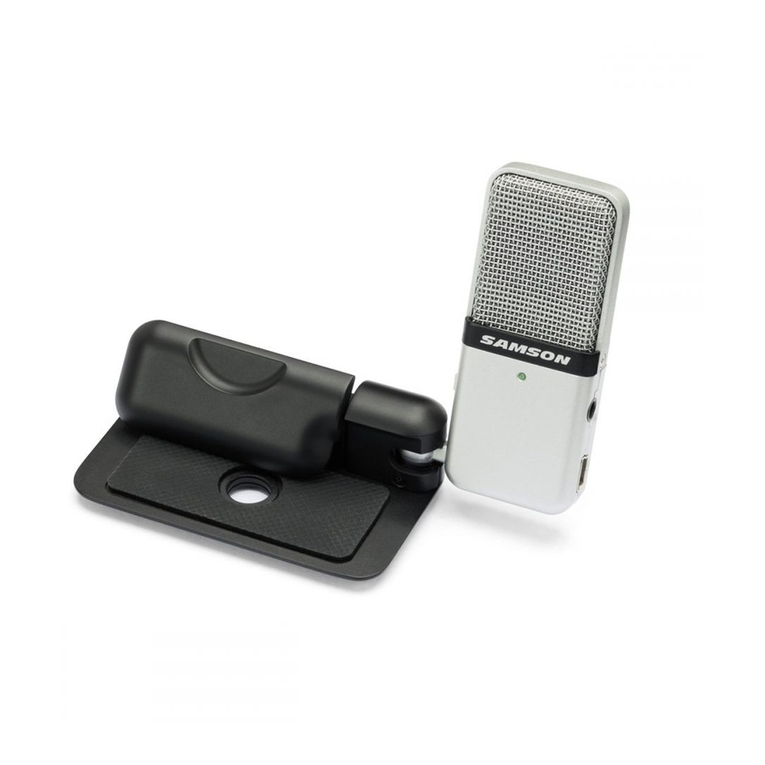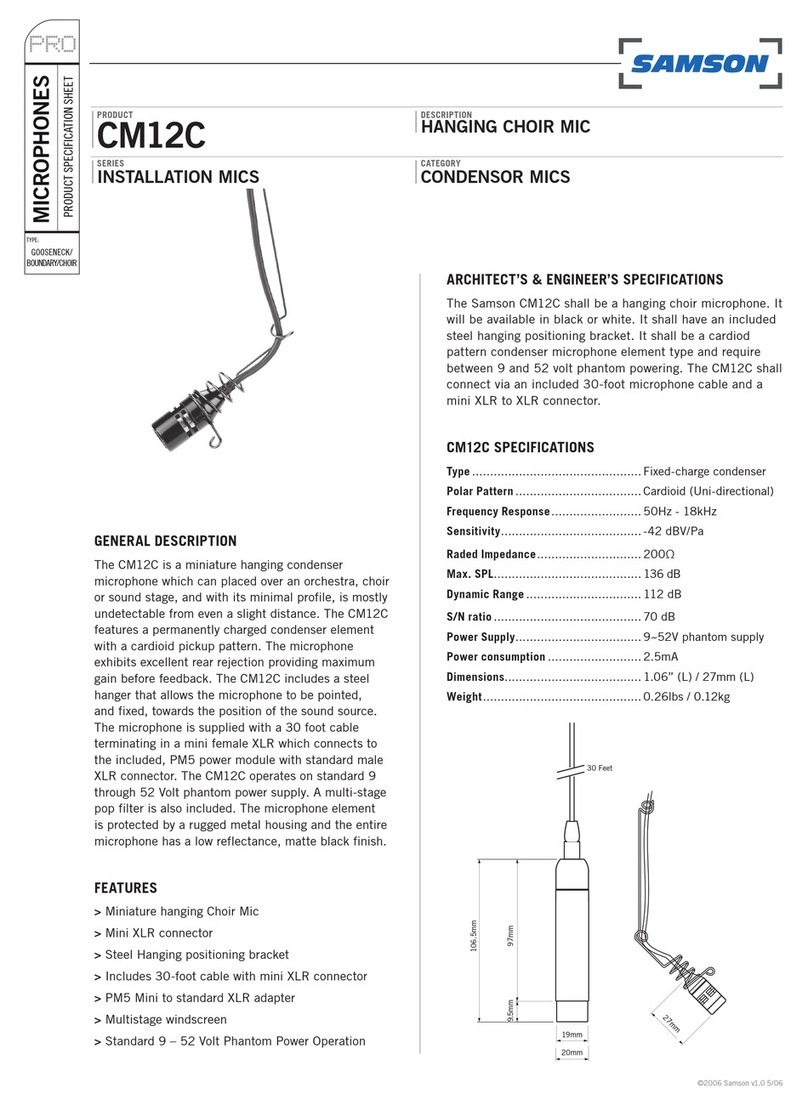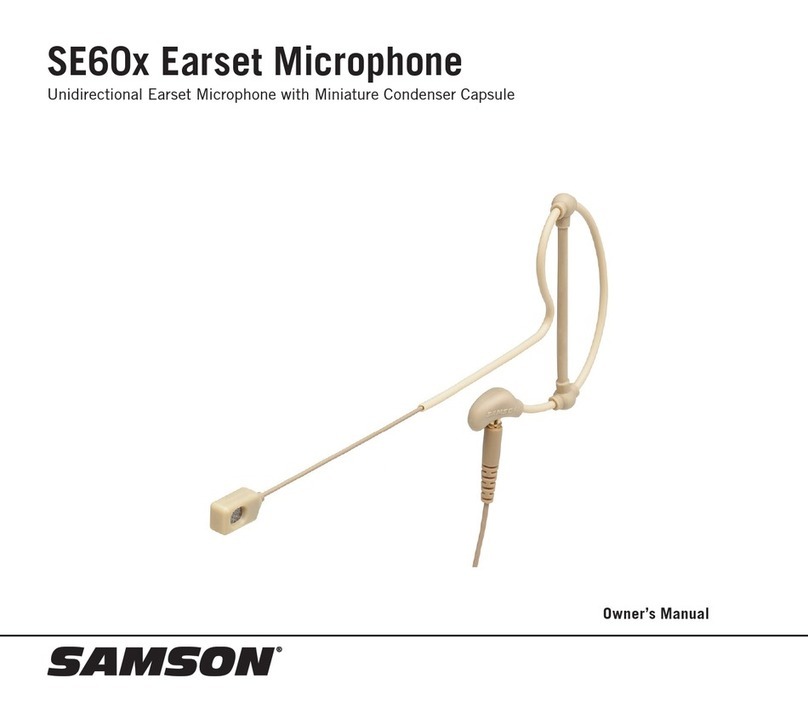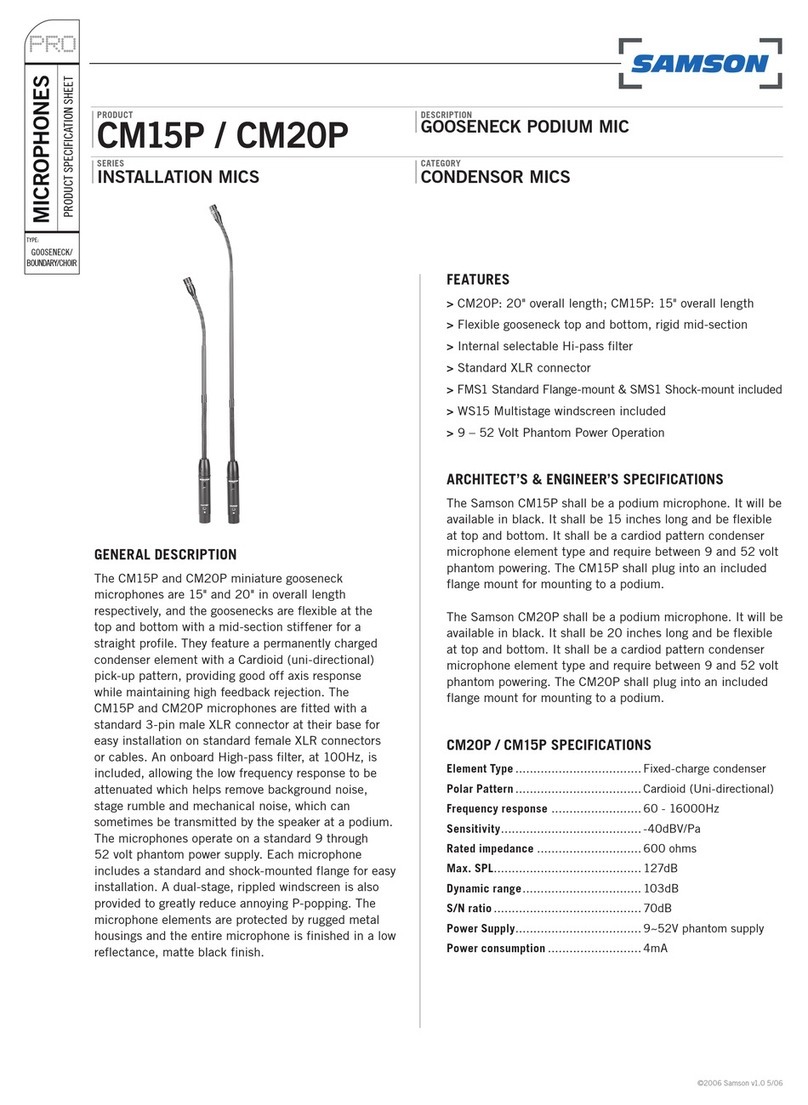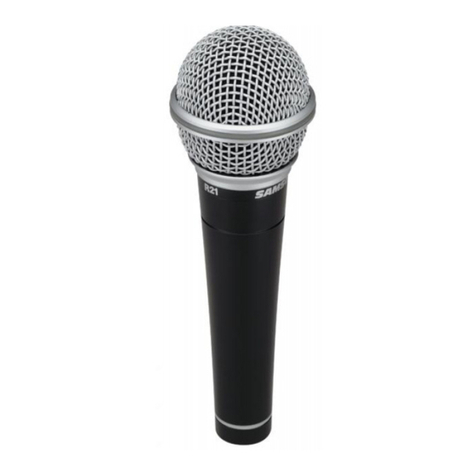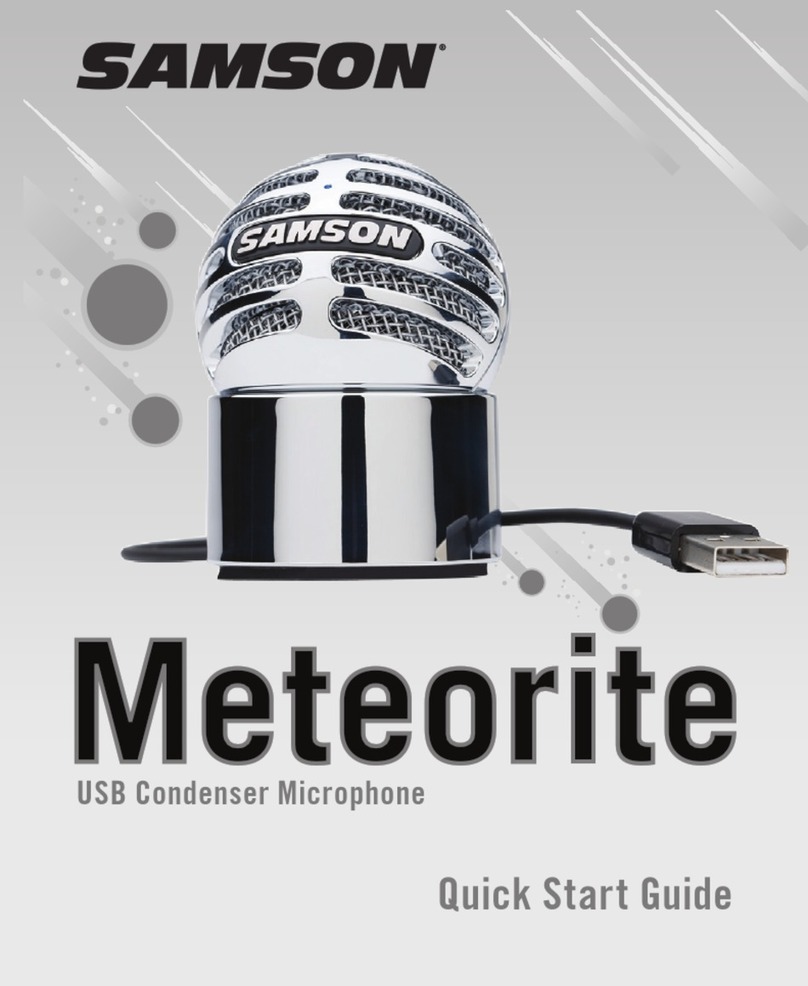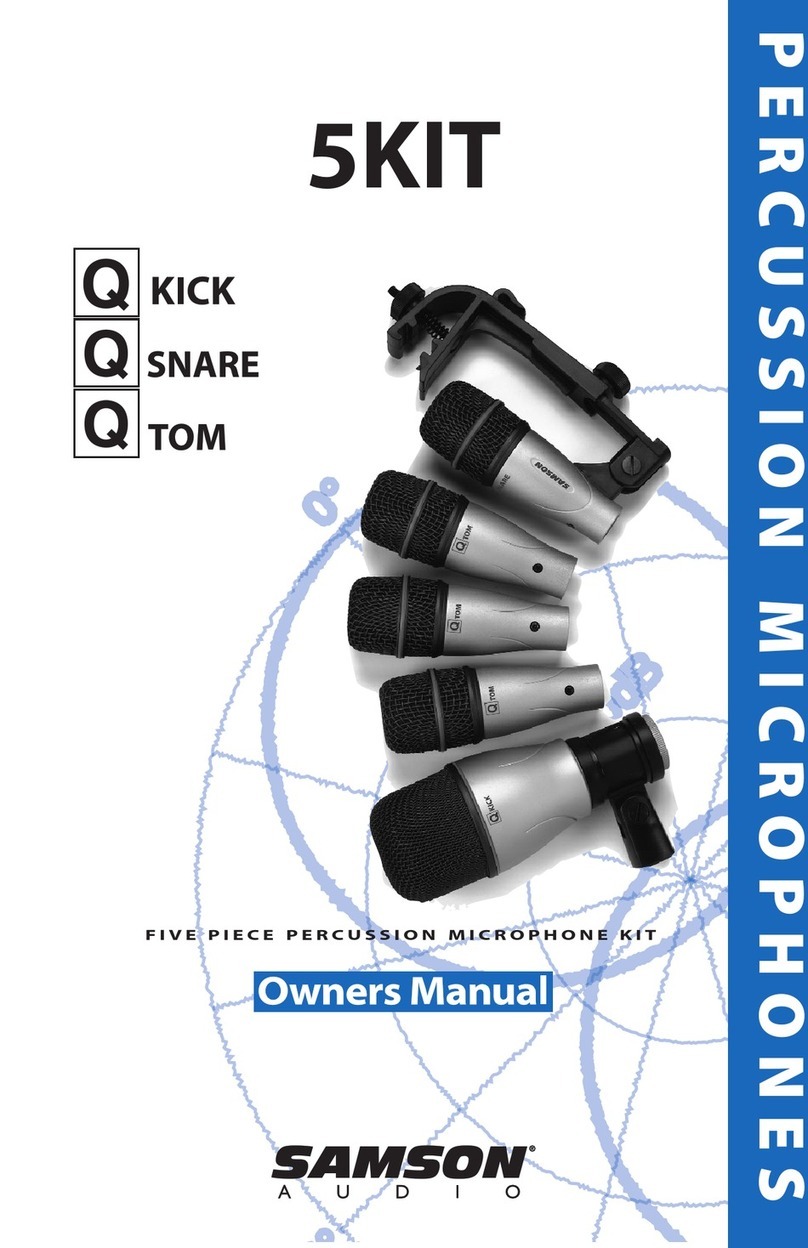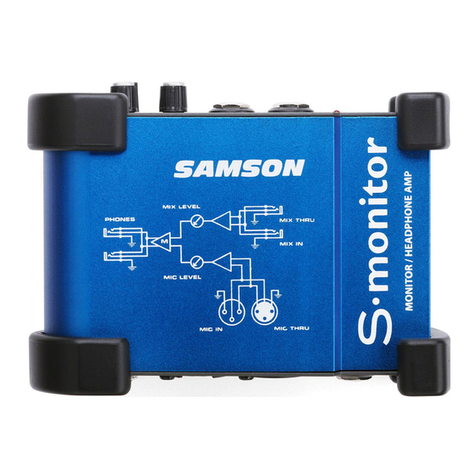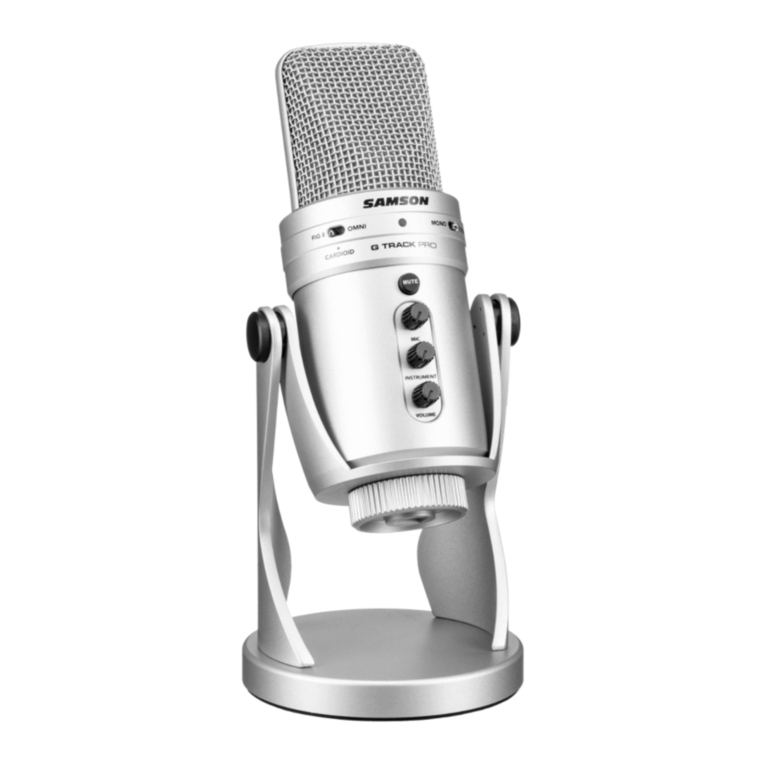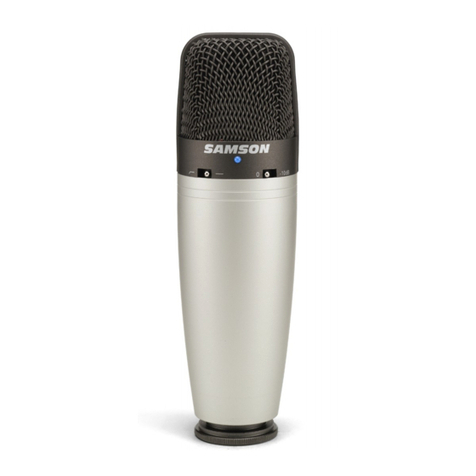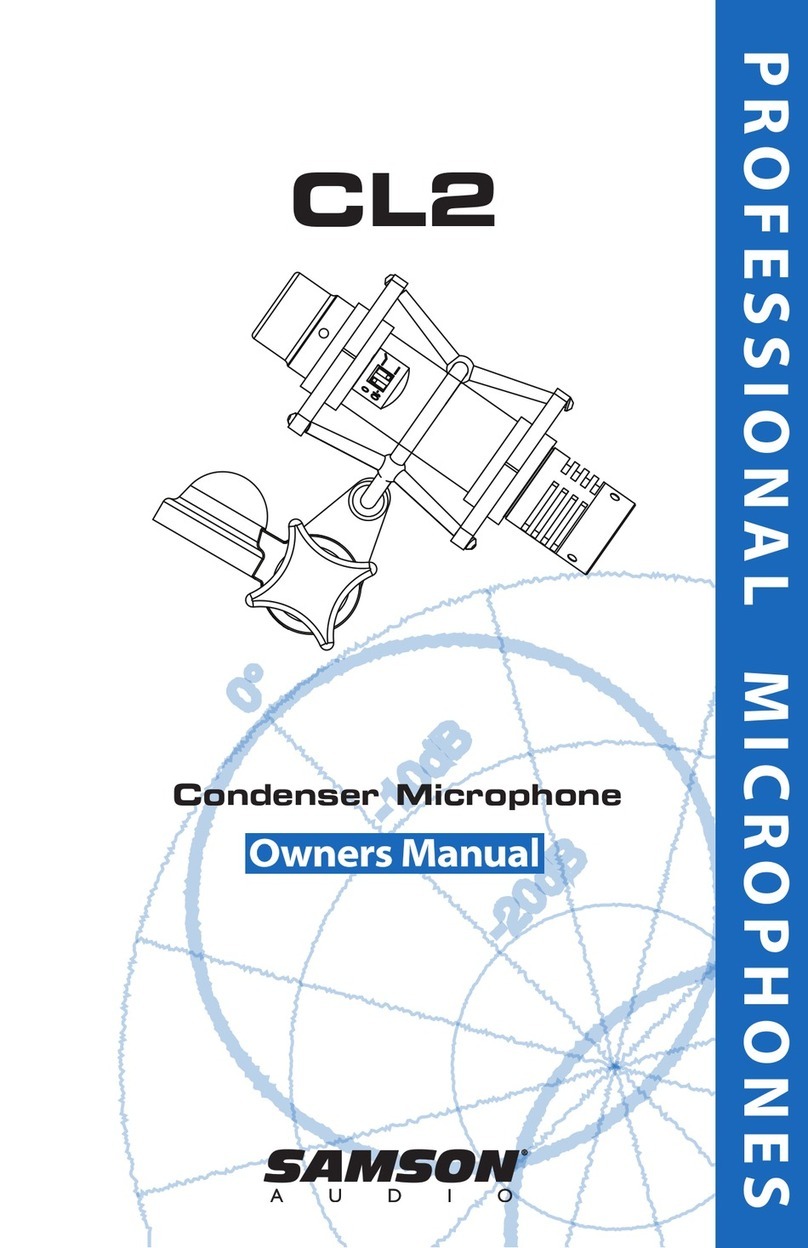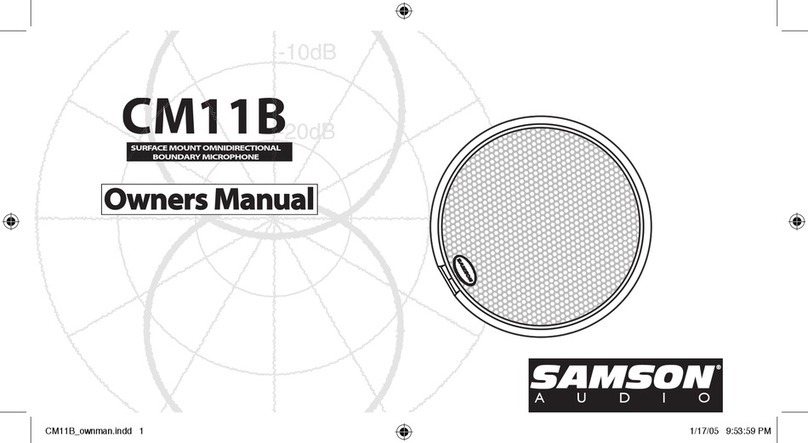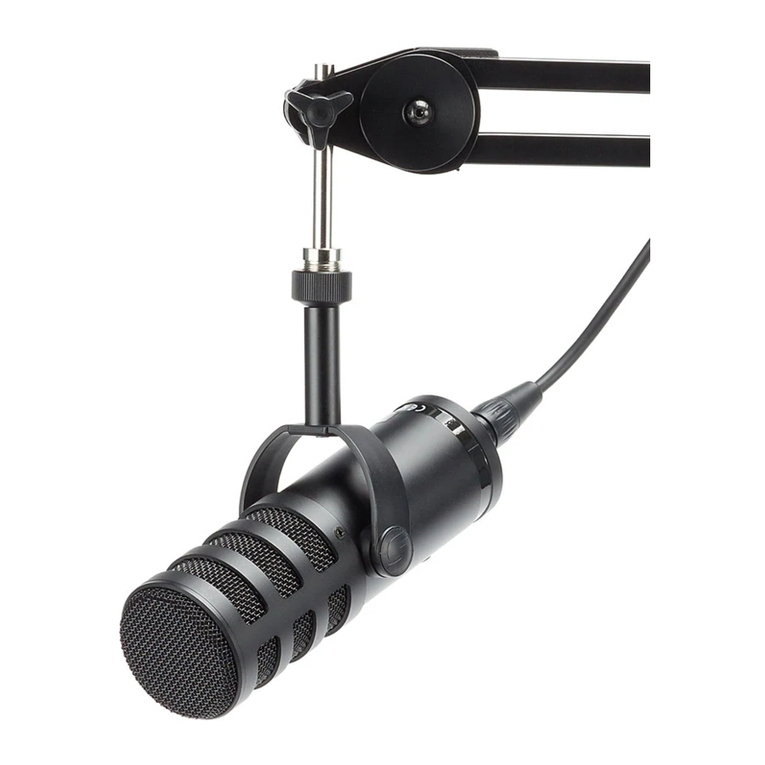Using Your R11
The R11 can be connected to any standard mixer,
mixer/amplifier, or mic preamp using a standard low
impedance microphone cable. Connect the female XLR
end directly to the R11 and the other end (normally a
male XLR, although some mixers use 1/4" connectors) to
the mixer, mixer/amplifier, or mic preamp.
The R11 can be mounted to any standard microphone
stand (using the included mic clip) or can be handheld. If
handheld, take care not to cover the head grille with your
hand. Be aware of a phenomenon called the
proximity
effect
which causes a noticeable increase in low frequen-
cies (bass response) when a microphone is close to the
audio source. This can have positive impact—for exam-
ple, it will cause your voice to sound much fuller when you
sing close to the mic than when you sing at a distance.
On the other hand, the proximity effect can make some
instruments too boomy when the mic is too close—for
example, when miking an acoustic guitar, you may want to
move the R11 back six inches or more from the front of
the guitar body. The key is experimentation, along with
awareness of the general principle that, the closer the R11
is to a signal source, the greater the bass response.
Every microphone has a characteristic
polar pattern
that
determines how well it accepts or rejects signal coming
from various areas around the microphone. For example,
omnidirectional
mics accept all signals regardless of
wherever those signals originate (in front of the mic,
behind it, to the side, etc.). In contrast, directional
cardioid
mics are specifically designed to accept mostly signal
coming from directly in front, and to reject signal coming
from behind or from the side. The most extreme variation
of cardioid is the
hyper-cardioid
pattern utilized by the
R11; this yields maximum rejection of signal coming from
any direction other than directly in front of the mic. For
this reason, the R11 excels in environments where there
is a good deal of unwanted ambient sound—it reproduces
those signals originating directly in front of the mic cap-
sule itself while rejecting those that originate from behind.
Specifications
Type Dynamic
Polar Pattern Hyper-cardioid
Frequency Response 60 Hz - 18 kHz
Sensitivity (0 dB = 1 V /
94 dB SPL@ 1 kHz) -75 dB ± 3 dB
Max. Input Level (1 kHz) 130 dB SPL
Samson Technologies Corp., 575 Underhill Blvd., Syosset, NY 11791
Tel: (516) 364-2244 Fax: (516) 364-3888
SAMSON
Output Impedance (@ 1 kHz) 400 ohm (Lo Z)
Connector 3-pin XLR male (pin 2 hot)
Dimensions
Head length 2.1 in. / 53.5 mm
Main unit length 4.75 in. / 120.5 mm
Total length 6.85 in. / 174 mm
Weight 8.8 oz. / 250 g
®
R11 Polar Pattern
The polar pattern also determines how prone a particular
mic is to inducing
feedback
. Feedback is that characteris-
tic nasty howling sound that occurs when a mic is placed
too close to a loudspeaker—the signal from the
loudspeaker is fed into the mic, then into the loudspeaker,
then into the mic, over and over again until an oscillating
tone is generated. Because the hyper-cardioid pattern
utilized by the R11 is so good at rejecting signal not
coming from directly in front of the mic, you’ll find that the
R11 greatly minimizes feedback problems when used in
live performance.
